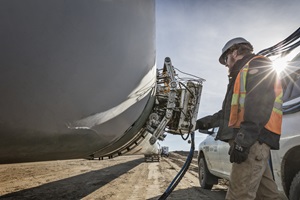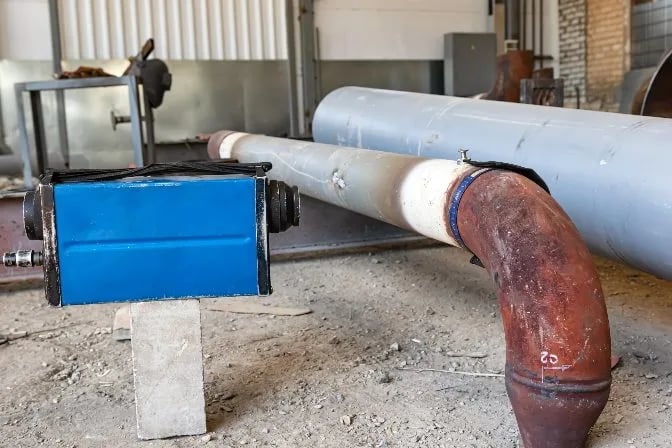Quality Control Assured: Professional Pipeline Welding Inspection Services
Quality Control Assured: Professional Pipeline Welding Inspection Services
Blog Article
Comprehensive Introduction of Pipe Welding Inspection Treatments
Pipe welding inspection treatments play a critical function in ensuring that welded links fulfill stringent market criteria and specifications. From precise pre-welding examinations to detailed post-weld analyses, a well-defined examination procedure is necessary for preserving the architectural strength of pipelines.
Pre-welding Assessment Preparations
Prior to starting the welding process, extensive pre-welding examination prep work are necessary to guarantee the integrity and high quality of the weld joint. These prep work involve a precise exam of the materials to be bonded, the welding devices, and the job atmosphere. By carrying out extensive pre-welding assessment prep work, prospective problems can be identified and resolved early on, leading to dependable and high-quality weld joints.
Welding Treatment Qualification
Thorough pre-welding evaluation prep work lay the foundation for the critical procedure of Welding Procedure Certification, making certain the honesty and top quality of the weld joint. Welding Treatment Certification (WPQ) is an important action in the welding process that entails testing and licensing welding procedures to ensure they fulfill particular criteria and requirements. The WPQ procedure normally includes welding treatment requirements development, welding procedure credentials testing, and documents of the results.
During welding treatment requirements development, essential details such as the welding procedure, welding products, joint design, and welding specifications are specified to develop a detailed treatment. Ultimately, welding procedure qualification testing is conducted to confirm the recommended treatment's integrity. This testing typically includes welding examination coupons that go through numerous mechanical and non-destructive examinations to examine the weld's high quality and adherence to the defined criteria.
In-process Weld Examination
Throughout the welding procedure, in-process weld inspection plays a critical function in making certain the top quality and honesty of the weld joint - Pipeline Welding Inspection. This sort of evaluation includes monitoring the welding specifications, assessing the weld grain development, and identifying any kind of prospective defects or interruptions as they take place. By performing in-process weld assessments, welding drivers can quickly resolve any kind of problems that may occur, thereby making certain and protecting against further problems that the last weld fulfills the needed specifications
Common approaches utilized for in-process weld examination include aesthetic evaluation, fluid penetrant screening, magnetic particle screening, ultrasonic testing, and radiographic screening. Overall, in-process weld evaluation is crucial for maintaining the top quality and dependability of bonded pipes.
Non-destructive Screening (NDT)
Non-destructive Testing (NDT) is a vital approach utilized in pipe welding evaluation to assess the integrity of weld joints without creating damages to the welded structure. By using different NDT methods, inspectors can assess the high quality of welds and determine any kind of issues or interruptions that may compromise the structural stability of the pipeline. Typical NDT techniques utilized in pipe welding examination consist of Radiographic Screening (RT), Ultrasonic Screening (UT), Magnetic Fragment Examining (MPT), Liquid Penetrant Testing (LPT), and Visual Testing (VT)
RT entails the use of X-rays or gamma rays to generate have a peek at this website pictures of the inner structure of the weld, permitting inspectors to discover defects such as porosity, splits, or insufficient blend. Furthermore, VT includes aesthetic inspection of welds to identify any kind of visible imperfections.
Post-weld Examination and Documentation


Documents of post-weld evaluation findings is vital for preserving sites quality assurance documents and guaranteeing compliance with industry criteria and laws. Detailed records need to include information concerning the assessment techniques used, the area and nature of any issues located, and any kind of restorative activities taken - Pipeline Welding Inspection. Appropriate paperwork not just acts as a document of the weld's top quality but additionally aids in future maintenance and evaluation procedures
Verdict

To conclude, pipeline welding evaluation procedures play a crucial function in making sure the top quality and integrity of welds. From pre-welding inspections to post-weld documents, each action is necessary in maintaining the safety and performance of pipes. By adhering to recognized procedures you can look here and conducting comprehensive assessments, potential defects can be identified and addressed before they cause pricey repairs or failings. On the whole, adherence to proper assessment methods is key to the success of pipe welding projects.
From precise pre-welding assessments to detailed post-weld assessments, a well-defined evaluation process is vital for preserving the structural soundness of pipes. By performing in-process weld examinations, welding drivers can immediately deal with any issues that might develop, consequently stopping additional defects and ensuring that the last weld satisfies the required requirements.
Common methods made use of for in-process weld assessment include aesthetic assessment, liquid penetrant testing, magnetic particle screening, ultrasonic testing, and radiographic screening.Non-destructive Screening (NDT) is a vital method employed in pipe welding assessment to evaluate the honesty of weld joints without triggering damage to the bonded framework. Post-weld examination entails various techniques to evaluate the welds for issues, consisting of visual examination, dye penetrant screening, magnetic particle screening, ultrasonic screening, and radiographic testing.
Report this page